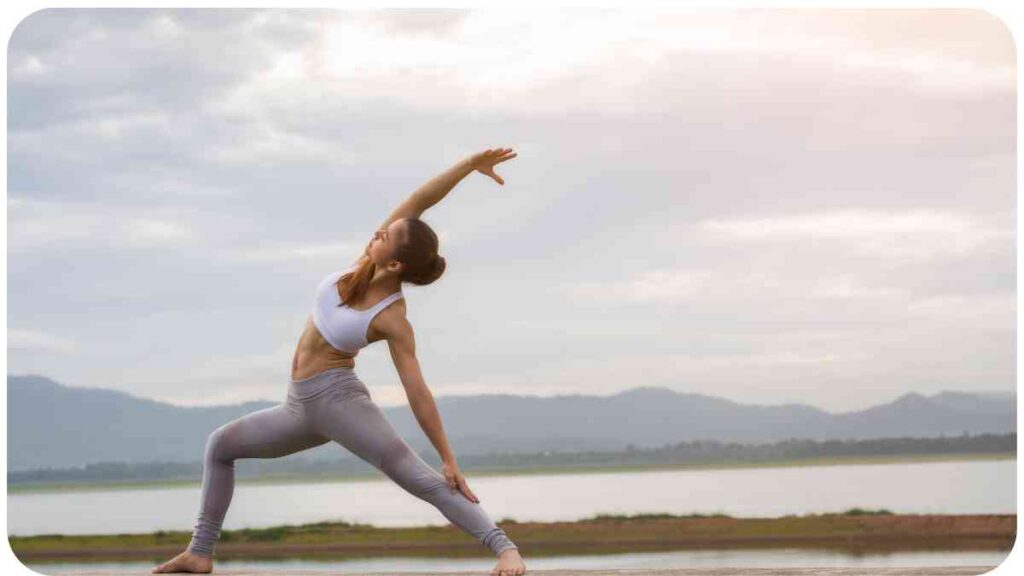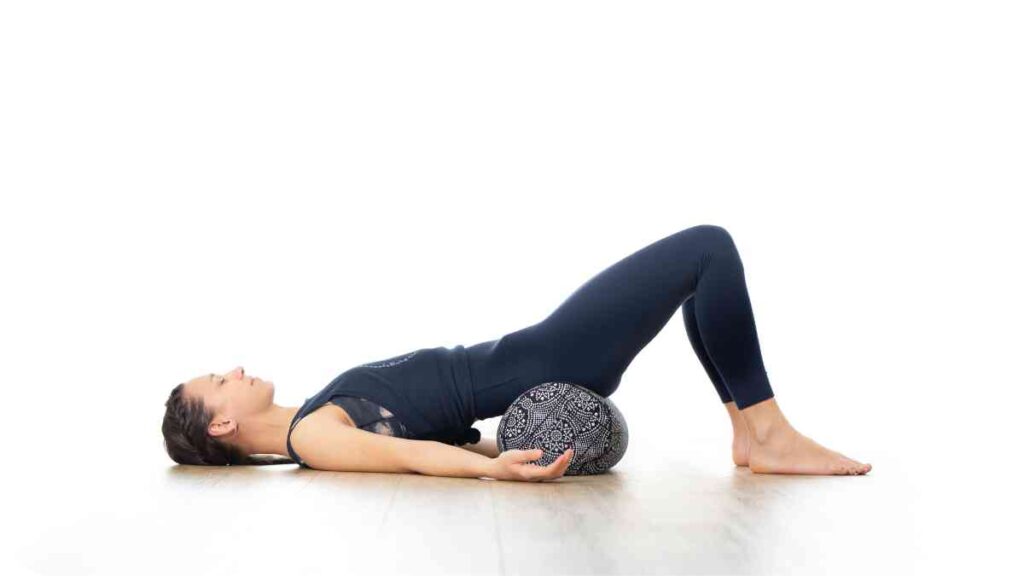Yoga is a journey of self-discovery, a path that leads to physical, mental, and spiritual well-being. However, for many practitioners, the experience isn’t always smooth sailing. One common occurrence that can catch yoga enthusiasts off guard is the trembling or shaking of the body during practice.
If you’ve ever found yourself wondering why your body shakes in yoga and how to address it, you’re not alone. In this article, we’ll delve into the various factors that contribute to this phenomenon and explore effective strategies to manage and even embrace the shake.
The breath is a vital component of yoga practice, influencing movement, focus, and relaxation. Understanding the Importance of Breath in Yoga: Understanding Pranayama Explore the fundamentals of Pranayama, the control of breath, to deepen your yoga practice and cultivate mindfulness, energy, and inner peace.
| Takeaways |
|---|
| Shaking during yoga is natural and can stem from physical, mental, and emotional factors. |
| Understanding the causes of shaking, such as muscle fatigue and emotional tension, can help manage it effectively. |
| Techniques such as proper alignment, deep breathing, and mindfulness can reduce shaking during yoga practice. |
| Embracing the shake with curiosity and self-compassion can lead to personal growth and resilience. |
| Consult a healthcare professional if shaking persists or is accompanied by pain or discomfort during yoga. |
2. Understanding the Shaking Phenomenon
Before delving into the causes and solutions, it’s essential to understand that shaking during yoga is a natural bodily response. It’s your body’s way of releasing tension, stress, and stored-up energy. Think of it as your muscles waking up and recalibrating as you move through different postures and stretches.
Athletes can greatly benefit from integrating yoga into their training routines. The Surprising Benefits of Yoga for Athletes Learn more about yoga benefits for athletes include improved flexibility, balance, and mental focus, leading to enhanced performance on and off the field.
3. The Physical Causes of Shaking

The shaking experienced during yoga can be attributed to both physical and mental factors. From a physical perspective, several muscles and nerves play a significant role in this phenomenon.
| Muscles/Nerves | Role in Shaking |
|---|---|
| Deep Core Muscles | Provide Stability |
| Peripheral Muscles | Support Movement |
| Sympathetic Nervous System | Activates Stress Response |
The deep core muscles, including the transverse abdominis and pelvic floor muscles, are responsible for providing stability and support to the spine and pelvis during yoga poses. When these muscles are weak or underutilized, the body may shake as it struggles to maintain balance and alignment.
Peripheral muscles, such as those in the arms and legs, also contribute to shaking. These muscles support movement and help you hold postures, especially when engaging in challenging poses that require strength and endurance.
Back pain sufferers find relief through targeted yoga poses that alleviate tension and strengthen the spine. Say Goodbye to Back Pain with These Yoga Poses Explore effective yoga poses such as Cat-Cow, Child’s Pose, and Downward-Facing Dog to promote spinal health and alleviate discomfort.
4. The Mental and Emotional Factors
In addition to the physical aspects, the shaking phenomenon in yoga is often influenced by mental and emotional factors. Stress, anxiety, fear, and self-doubt can all manifest as physical tension in the body, resulting in involuntary trembling during practice.
For example, if you’re attempting a challenging balance pose and find yourself doubting your abilities or fearing falling, your body may respond by tensing up and shaking. Similarly, unresolved emotional issues or past traumas can surface during yoga, leading to involuntary movements as the body attempts to release built-up tension and energy.
Understanding the mind-body connection is crucial when addressing shaking in yoga. By cultivating mindfulness and awareness, you can learn to recognize and acknowledge the mental and emotional triggers behind the shaking, allowing you to work through them with compassion and self-acceptance.
5. Tips to Manage Shaking During Yoga

While shaking during yoga can be disconcerting, there are several strategies you can employ to manage and minimize this phenomenon. Whether you’re a beginner or an experienced practitioner, incorporating these tips into your practice can help enhance your overall yoga experience.
Yoga offers a safe and effective approach to managing and preventing back pain. Yoga for Back Pain: How to Safely Practice Learn how to practice yoga safely with proper alignment, modifications, and gentle stretches to relieve tension and improve spinal health for long-term relief
Pre-Yoga Practices to Reduce Shaking
| Practice | Description |
|---|---|
| Breathwork | Engage in deep, diaphragmatic breathing exercises to calm the nervous system and center the mind before starting your yoga practice. |
| Warm-up Stretches | Perform gentle warm-up stretches to gradually awaken and prepare the muscles for more challenging poses, reducing the likelihood of shaking. |
| Mindfulness Meditation | Take a few moments to cultivate mindfulness through meditation, allowing yourself to observe any tension or anxiety present in the body without judgment. |
During-Yoga Techniques to Manage Shaking
| Technique | How to Apply |
|---|---|
| Focus on Alignment | Pay close attention to proper alignment and engagement in each posture, distributing weight evenly and avoiding excessive strain on any one muscle group. |
| Modify Poses | If a particular pose feels too challenging or causes excessive shaking, don’t hesitate to modify it by using props or adjusting your stance to make it more accessible. |
| Listen to Your Body | Tune into your body’s signals and honor its limitations. If shaking becomes too intense or uncomfortable, take a brief rest or switch to a gentler pose until you feel ready to continue. |
Post-Yoga Strategies for Shaking Relief
| Strategy | How to Implement |
|---|---|
| Cool Down with Relaxation Poses | After completing your yoga practice, spend some time in relaxation poses like Savasana (Corpse Pose) to allow the body to fully release tension and integrate the benefits of your practice. |
| Hydrate and Nourish Your Body | Drink plenty of water and consume nourishing foods to replenish lost fluids and provide essential nutrients to support muscle recovery and relaxation. |
| Reflect and Journal | Take a few moments to reflect on your yoga practice, noting any insights or emotions that arose during the session. Journaling can be a powerful tool for processing and releasing tension stored in the body. |
6. Embracing the Shake: A Mindful Approach

Rather than viewing shaking during yoga as a hindrance or sign of weakness, consider reframing it as an opportunity for growth and self-awareness. Embracing the shake entails adopting a mindful approach to your practice, cultivating acceptance and curiosity toward whatever sensations arise in the body.
Unlock the potential for a stronger, more flexible body by embracing yoga practice regularly. Unlock the Secret to a Stronger and More Flexible Body with Yoga Discover the transformative power of yoga postures and sequences that promote muscle strength, joint mobility, and overall well-being.
By approaching shaking with a sense of curiosity rather than judgment, you can deepen your understanding of your body’s capabilities and limitations. Each tremble and quiver becomes a valuable teacher, offering insights into areas of weakness, imbalance, or resistance that may require attention and nurturing.
Moreover, embracing the shake can foster resilience and self-confidence, empowering you to persevere through challenges and setbacks on and off the yoga mat. Instead of striving for perfection or mastery, embrace the imperfections and fluctuations inherent in the journey of yoga, recognizing that growth often occurs through struggle and discomfort.
7. Conclusion
In conclusion, shaking during yoga is a common and natural occurrence that can stem from a combination of physical, mental, and emotional factors. Rather than viewing it as a problem to be solved, approach shaking with curiosity, compassion, and mindfulness.
By understanding the underlying causes and implementing practical strategies to manage and embrace the shake, you can cultivate a deeper connection with your body and enhance your yoga practice.
Remember, yoga is not about achieving a perfect pose or eliminating shaking altogether; it’s about embracing the journey and honoring the wisdom of your body. So the next time you feel your muscles quivering during practice, take a deep breath, smile, and let the shake be your guide on the path to self-discovery and growth.
Now, armed with a better understanding of why your body shakes in yoga and how to navigate this phenomenon with grace and mindfulness, you can step onto your mat with confidence and embrace the transformative power of the shake. Namaste.
Further Reading
- Why is My Body Shaking in Yoga Class?: Explore the reasons behind shaking during yoga practice and learn strategies to manage it effectively.
- Dear Willow: Why Do My Muscles Shake in Yoga?: Delve into the physiological and psychological factors that contribute to muscle shaking during yoga, with expert insights and practical tips.
- Understanding Anxiety Shaking: Discover how anxiety can manifest as shaking in the body and learn techniques to cope with and reduce anxiety-related trembling.
FAQs
Why does my body shake during yoga?
During yoga, shaking can occur due to a combination of factors such as muscle fatigue, activation of the sympathetic nervous system, and emotional tension, as the body attempts to release stored-up energy and tension.
Is shaking during yoga normal?
Yes, shaking during yoga is a common occurrence and is often a sign that your body is working to release tension and recalibrate muscles. It’s a natural response to the physical and mental challenges of yoga practice.
How can I reduce shaking during yoga?
To reduce shaking during yoga, focus on proper alignment, engage in deep breathing techniques, and listen to your body’s signals. Incorporating mindfulness practices and gentle warm-up stretches can also help alleviate shaking.
Can anxiety cause shaking during yoga?
Yes, anxiety can manifest as shaking in the body, especially during stressful or challenging situations such as yoga practice. By addressing underlying anxiety through relaxation techniques and self-care practices, you can reduce trembling sensations during yoga.
Should I be concerned about shaking during yoga?
In most cases, shaking during yoga is harmless and temporary, indicating that your body is adapting to the demands of the practice. However, if shaking is accompanied by pain or discomfort, or if it persists despite adjustments in your practice, it’s advisable to consult a healthcare professional for further evaluation.

Hello, my name is Hellen James! I am a yoga teacher and writer who loves to share information about how you can achieve a more fulfilling life. I have been practicing mindfulness, yoga, and meditation for over 10 years. My passion for these practices has led me to teach them to others.

